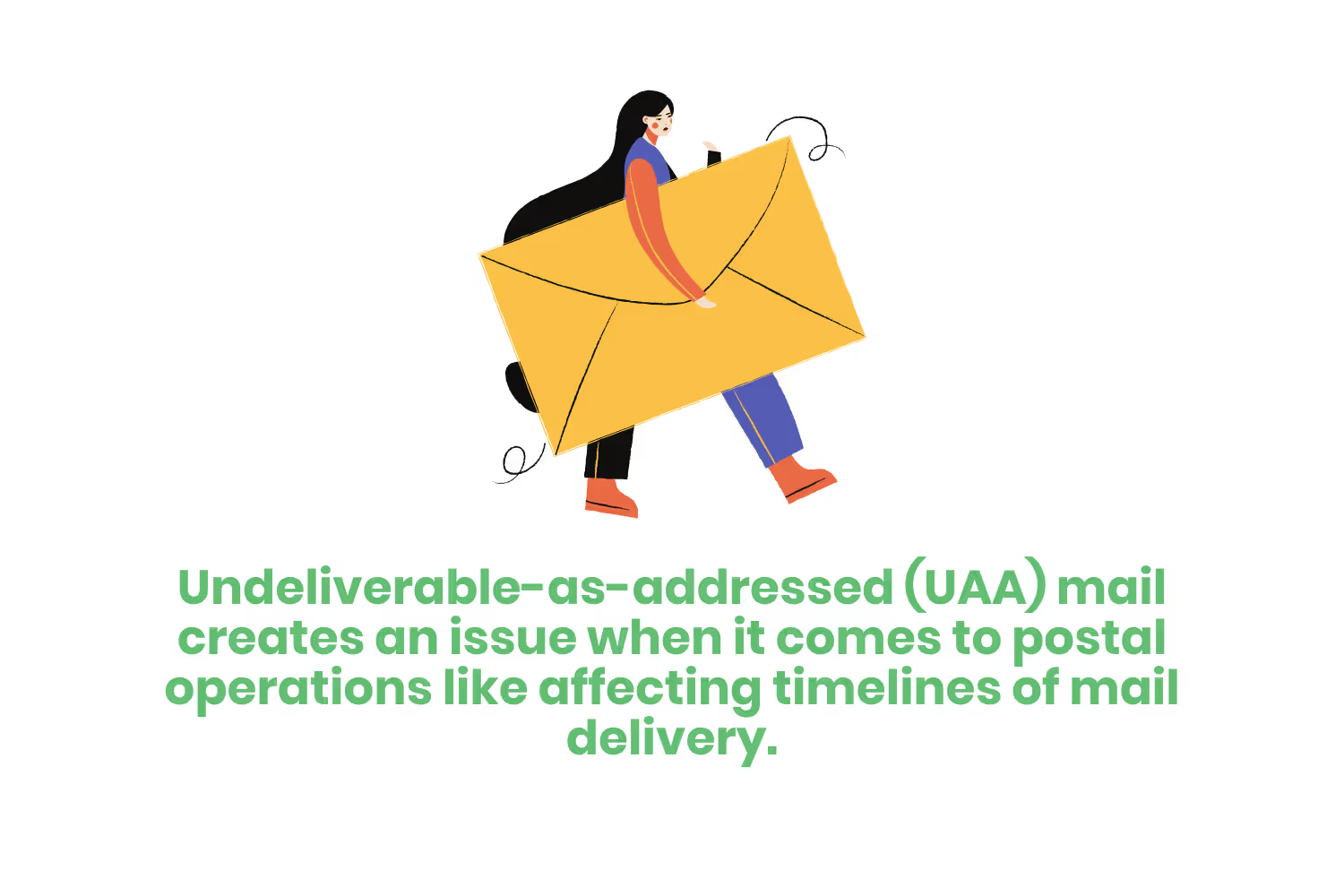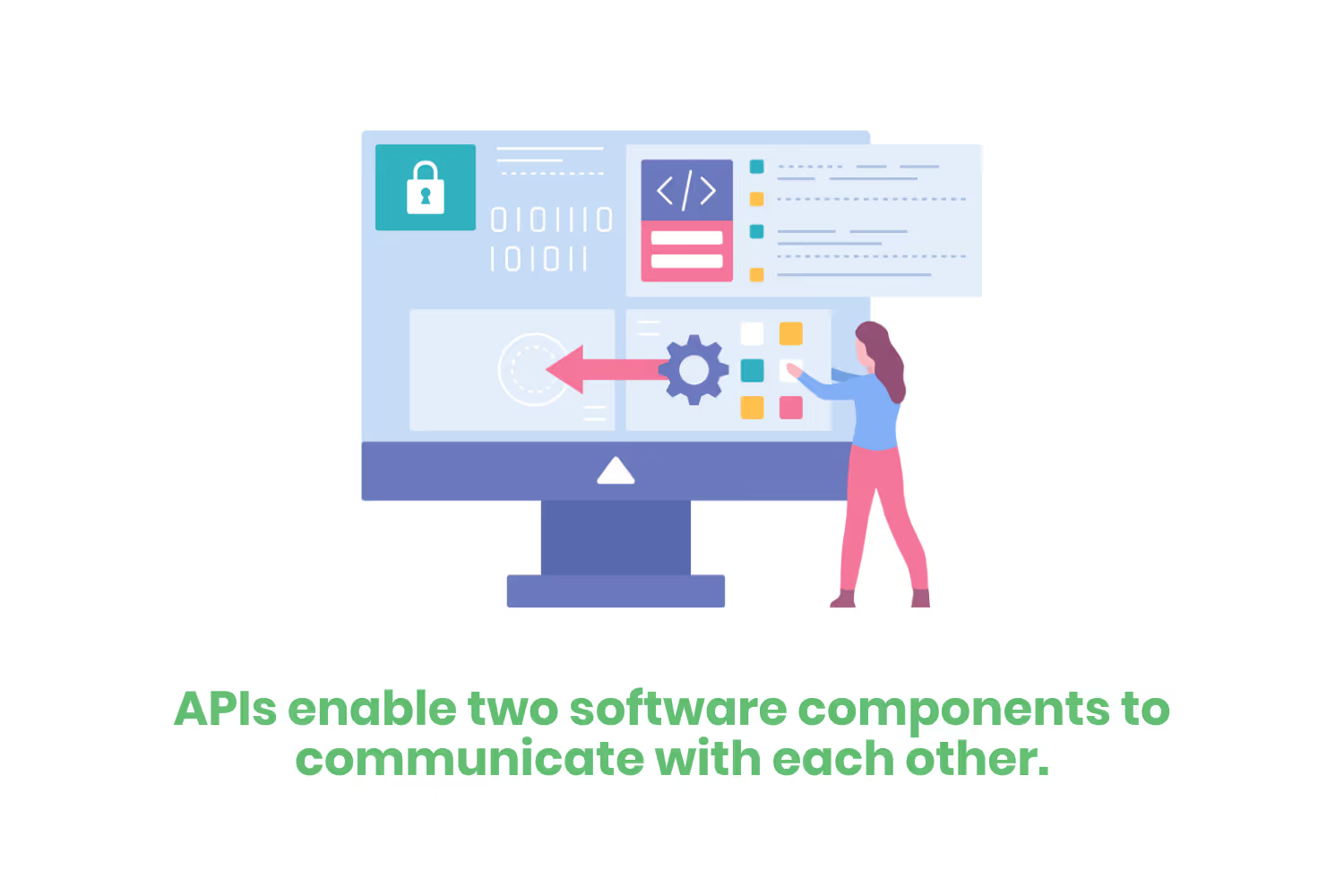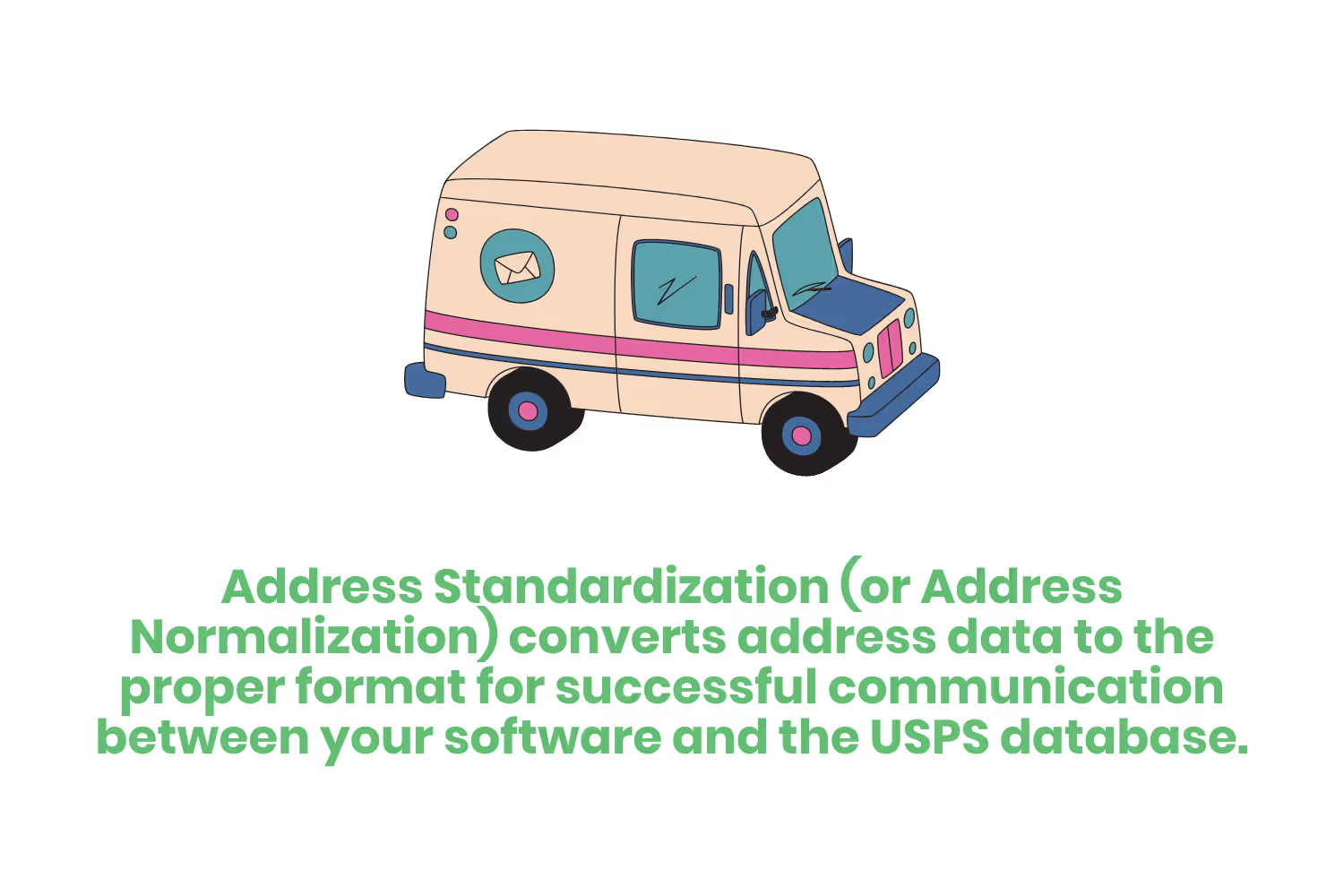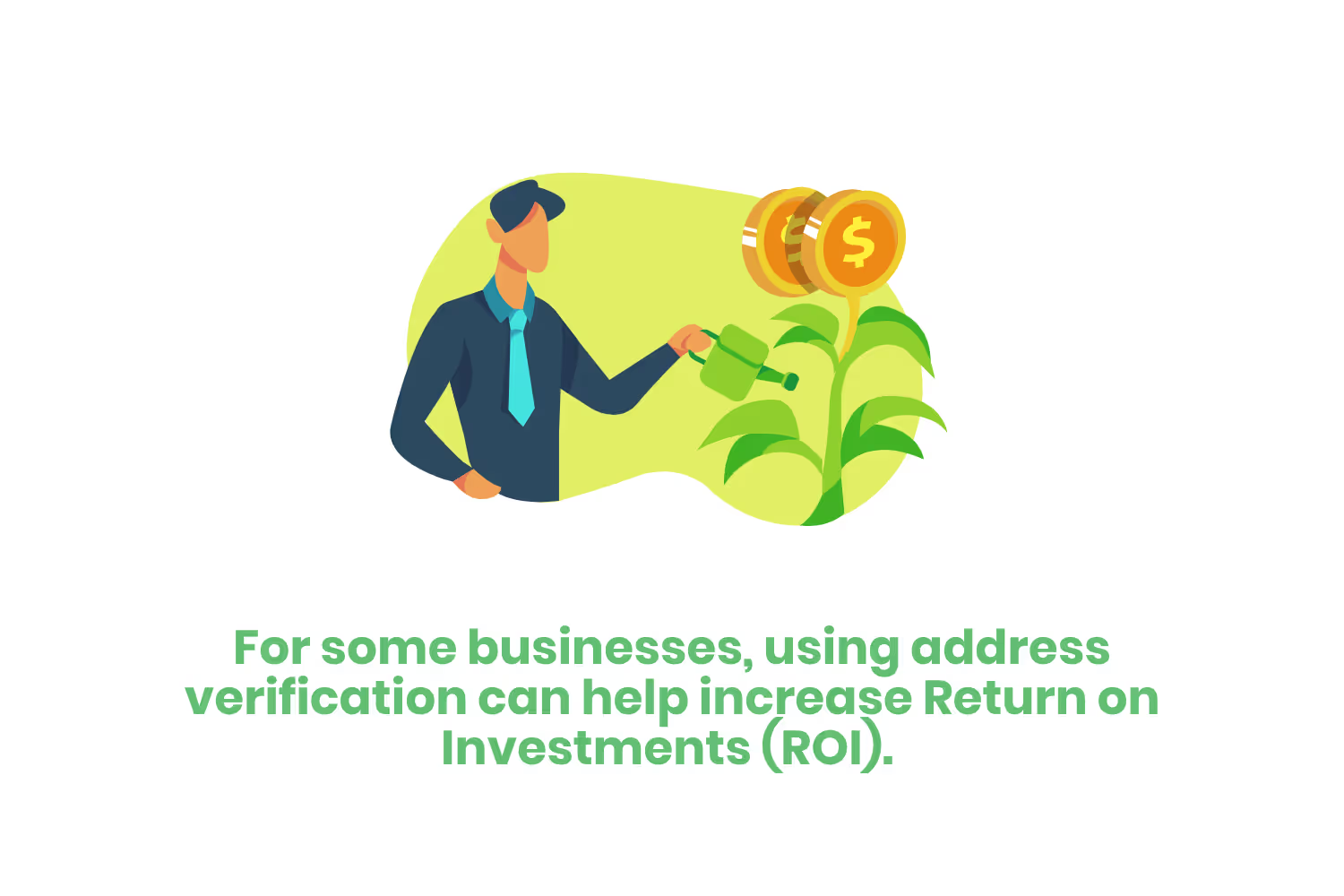The Ultimate Guide to Postal Address Verification
So how can you avoid losing revenue and frustrating your clients? Making sure you’re mailing a verified address should be your first step!

According to the US Postal Service (USPS), the top three reasons recipients didn’t receive their healthcare-related mail are…
- Change of Address (33.08%) - when the addressee has moved from their original address without filing a Change of Address (COA) form.
- Undeliverable-as-Addressed (26.4%) - if the address is missing NCOA forwarding information or secondary address information such as an apartment number.
- Attempted, Not known (14.06%) - the name of the addressee is not known or they do not live at the address.
If you can’t see where I am going with this, here’s the bottom line; lost mail equals lost revenue. That’s right, you read that correctly.
After all, how is any organization supposed to collect payments if their clients aren’t getting an invoice? In these cases, that bill is either returned to the sender or thrown out properly as waste.

On top of all this, undeliverable-as-addressed (UAA) mail creates an issue when it comes to postal operations such as affecting timelines of mail delivery. So, those invoices you do have the correct address for could be getting to the recipient late.
If you’re reading this and you think you’re safe because you aren’t in the healthcare sector, I have some bad news. This issue isn’t specific to the healthcare field alone. UAA also affects other industries like financial, marketing, government, agriculture and more.
So how can you avoid losing revenue and frustrating your clients? Making sure you’re mailing a verified address should be your first step!
What is Postal Address Verification?
Postal address verification is a tool that checks the accuracy of recipients’ addresses. Without utilizing this strategy, companies risk not only also losing revenue in the process, but also delivering mail to the wrong location.
As you can imagine having an invoice go to the wrong address could be detrimental as this could constitute a security breach. Especially if you work in healthcare. You’re looking at the possibility of a HIPAA violation. We’ve spent some time learning about the consequences of a HIPAA breach, but I’ll remind you that this can easily lead to a hefty fine.
The mailing system itself isn’t always a foolproof process either. During the pandemic, for example, postal services were quickly disrupted. The USPS’s nationwide on-time performance saw a significant drop. The report shows that the 92 percent average in 2019 fell to 87 percent in 2020.

This, of course, was due to employee absences throughout the fiscal year. Imagine having an invoice with the wrong address during a time like this. It could take quite a while for it to get to the right place after the sender is able to adjust any errors and send it out again. It could even take months!
Implementing a postal address verification tool can correct many of the issues that cause undeliverable mail. In cases where this software is unable to scrape enough data to find the correct address, this can still benefit the organization by allowing them to mark their records accordingly.
Doing this separates the bad data from mailing files for further research as to what might be wrong and how to prevent it from happening again. This definitely beats spending revenue to print and mail unsuccessfully multiple times.
I bet you’re wondering, “Okay, but how does this software really work? How is it possible to pull the correct address out of thin air?” Well, let me introduce you to Application Programming Interface (API).
Application Programming Interface
APIs are an essential tool in how your address verification software works. Since we cannot use incomplete addresses to deliver mail, this tool makes sure every address contains the right information.
You can think of APIs as address-cleansing software. This means that this service will be able to wipe away the incorrect or extra data and replace it with the correct information within seconds. I’m sure you can see how this is much faster than the average human, thus saving your company time and streamlining administration work.
Making sure you have the necessary information such as a house or apartment number, street, city, state, and zip code is what API is all about. It makes it easy to take the address and cross-reference it to the necessary database for verification. In this case, the database I am referring to is the USPS database.

Because of the nature of this tool, benefits stretch far beyond address verification as well. APIs enable two software components to communicate with each other. So, this can look like many different things, but we are going to focus on mailing addresses in this blog. Back to the topic on hand.
Using this address-cleansing software ensures you have access to the most accurate information when sending parcels or packages. As I said earlier, it’s possible to cleanse addresses for verification manually, however, this is tedious work that is sure to waste time and irritate your employees. There is also more room for mistakes or human error.
When we talk about address cleansing with an API, there are three main steps to consider. This data hygiene process includes the following steps, which are in order from top to bottom:
- Standardize
- Correct
- Validate
Let’s explore these next steps now!
Address Standardization & Correction
Address Standardization (or Address Normalization) converts address data to the proper format for successful communication between your software and the USPS database. While Address Correction fixes any errors, abbreviates words, and adds missing components.
You can break down Address Standardization and Correction into four steps:
- Importing the address. Gathering all addresses from different sources and placing them on one sheet. Sources may include excel spreadsheets, SQL databases, and more.
- Profile the data to look for any errors in the address. Performs data profiling to explore the scope and type of errors in the address list. This gives a rough idea of what may be the problem before a user applies standardization.
- Correct detected errors. Cleanse the addresses of any mistakes and standardize to fit USPS guidelines.
- Remove duplicate addresses. Look for double counts of addresses in your spreadsheet or database and remove them as necessary.

Once you complete these steps, you can finally move to address validation. Here is how it works and why it’s essential.
Address Validation
While Address Standardization and Correction make sure the spelling and formation of addresses are correct, they cannot guarantee that the addresses are valid or even deliverable. This is why once you have successfully corrected and deduplicated the data, you must validate it.
During address validation, the solution takes your corrected addresses and then compares them to the USPS database. By doing this you are now able to validate the deliverability of the address. If information is still incorrect or missing, address verification will update those records.
Postal Address Verification Benefits
Utilizing an address verification tool can offer many benefits to your business. The most important of those benefits, or at least the most enticing from a business perspective, is saving money. Consistency is key when it comes to handling data.

Here are a few more benefits you can expect by having a structured address verification plan in place:
- Having uniform records allows you to peruse your database with ease. Saving time and energy when it comes to your day-to-day operations opens the door for opportunities to improve on other administrative tasks.
- Correct errors before you send your mail, not after. You don’t want to waste time reaching your clients while an unpaid bill is still outstanding.
- Increase your Return on Investment (ROI). For some businesses, using address verification services allows them to better target their desired customers.
- Faster mail delivery. Your local mail carrier can deliver more of your mail by using address validation. This tool helps them presort carrier codes by the route and sort the mail in the correct sequence.
- Provide better customer service. There’s nothing better than the reassurance that the organization you work with is able to meet your needs. This includes finances as well. Being able to send information concerning invoices to clients in a timely manner makes clients happy.
Conclusion
Postal Address Verification is essential when it comes to contacting your clients via mail.
The sooner you can send an invoice to the correct delivery point, the sooner you can get paid. Not only will this help your revenue cycle run smoother, but can also reduce shipping costs and deepen relationships with your clients.
Sending your mail and packages to incorrect addresses is a burden on everyone involved. This includes companies and clients alike… and also your mail carrier. Wasting time and resources is best mitigated by having a good game plan for your day to day tasks as opposed to just “winging it”. Luckily using a Postal Address Verification tool can help you have a better handle on your administrative duties and how fast you get paid.
Emphasize your product's unique features or benefits to differentiate it from competitors
In nec dictum adipiscing pharetra enim etiam scelerisque dolor purus ipsum egestas cursus vulputate arcu egestas ut eu sed mollis consectetur mattis pharetra curabitur et maecenas in mattis fames consectetur ipsum quis risus mauris aliquam ornare nisl purus at ipsum nulla accumsan consectetur vestibulum suspendisse aliquam condimentum scelerisque lacinia pellentesque vestibulum condimentum turpis ligula pharetra dictum sapien facilisis sapien at sagittis et cursus congue.
- Pharetra curabitur et maecenas in mattis fames consectetur ipsum quis risus.
- Justo urna nisi auctor consequat consectetur dolor lectus blandit.
- Eget egestas volutpat lacinia vestibulum vitae mattis hendrerit.
- Ornare elit odio tellus orci bibendum dictum id sem congue enim amet diam.
Incorporate statistics or specific numbers to highlight the effectiveness or popularity of your offering
Convallis pellentesque ullamcorper sapien sed tristique fermentum proin amet quam tincidunt feugiat vitae neque quisque odio ut pellentesque ac mauris eget lectus. Pretium arcu turpis lacus sapien sit at eu sapien duis magna nunc nibh nam non ut nibh ultrices ultrices elementum egestas enim nisl sed cursus pellentesque sit dignissim enim euismod sit et convallis sed pelis viverra quam at nisl sit pharetra enim nisl nec vestibulum posuere in volutpat sed blandit neque risus.

Use time-sensitive language to encourage immediate action, such as "Limited Time Offer
Feugiat vitae neque quisque odio ut pellentesque ac mauris eget lectus. Pretium arcu turpis lacus sapien sit at eu sapien duis magna nunc nibh nam non ut nibh ultrices ultrices elementum egestas enim nisl sed cursus pellentesque sit dignissim enim euismod sit et convallis sed pelis viverra quam at nisl sit pharetra enim nisl nec vestibulum posuere in volutpat sed blandit neque risus.
- Pharetra curabitur et maecenas in mattis fames consectetur ipsum quis risus.
- Justo urna nisi auctor consequat consectetur dolor lectus blandit.
- Eget egestas volutpat lacinia vestibulum vitae mattis hendrerit.
- Ornare elit odio tellus orci bibendum dictum id sem congue enim amet diam.
Address customer pain points directly by showing how your product solves their problems
Feugiat vitae neque quisque odio ut pellentesque ac mauris eget lectus. Pretium arcu turpis lacus sapien sit at eu sapien duis magna nunc nibh nam non ut nibh ultrices ultrices elementum egestas enim nisl sed cursus pellentesque sit dignissim enim euismod sit et convallis sed pelis viverra quam at nisl sit pharetra enim nisl nec vestibulum posuere in volutpat sed blandit neque risus.
Vel etiam vel amet aenean eget in habitasse nunc duis tellus sem turpis risus aliquam ac volutpat tellus eu faucibus ullamcorper.
Tailor titles to your ideal customer segment using phrases like "Designed for Busy Professionals
Sed pretium id nibh id sit felis vitae volutpat volutpat adipiscing at sodales neque lectus mi phasellus commodo at elit suspendisse ornare faucibus lectus purus viverra in nec aliquet commodo et sed sed nisi tempor mi pellentesque arcu viverra pretium duis enim vulputate dignissim etiam ultrices vitae neque urna proin nibh diam turpis augue lacus.



![[ANSWERED] What is a Long-Term Care (LTC) Pharmacy](https://cdn.prod.website-files.com/67e2b8210878abcba6f91ae6/68d687806a075a1cf64659b0_WhatisLongTermCarePharmacy_925.avif)
